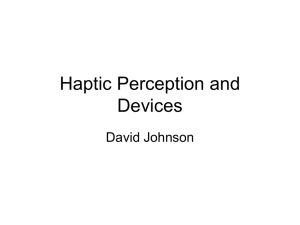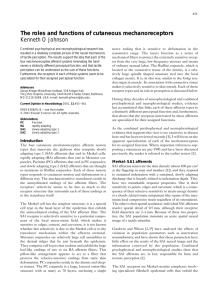Brain studies - Skin to Skin Contact
advertisement
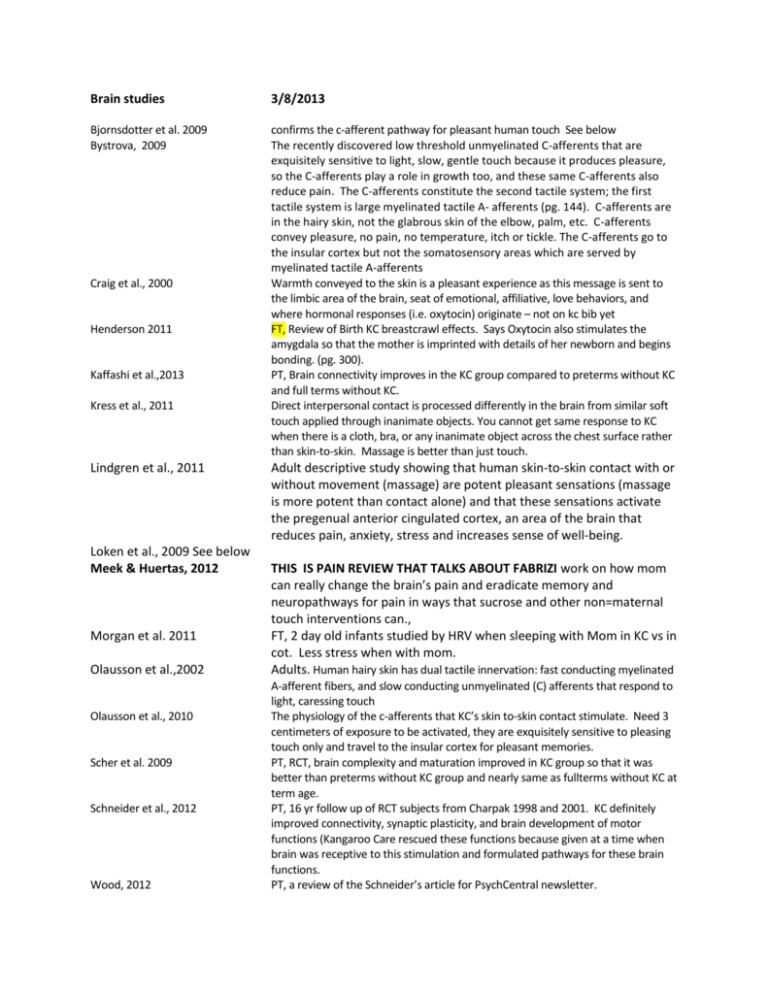
Brain studies 3/8/2013 Bjornsdotter et al. 2009 Bystrova, 2009 confirms the c-afferent pathway for pleasant human touch See below The recently discovered low threshold unmyelinated C-afferents that are exquisitely sensitive to light, slow, gentle touch because it produces pleasure, so the C-afferents play a role in growth too, and these same C-afferents also reduce pain. The C-afferents constitute the second tactile system; the first tactile system is large myelinated tactile A- afferents (pg. 144). C-afferents are in the hairy skin, not the glabrous skin of the elbow, palm, etc. C-afferents convey pleasure, no pain, no temperature, itch or tickle. The C-afferents go to the insular cortex but not the somatosensory areas which are served by myelinated tactile A-afferents Warmth conveyed to the skin is a pleasant experience as this message is sent to the limbic area of the brain, seat of emotional, affiliative, love behaviors, and where hormonal responses (i.e. oxytocin) originate – not on kc bib yet FT, Review of Birth KC breastcrawl effects. Says Oxytocin also stimulates the amygdala so that the mother is imprinted with details of her newborn and begins bonding. (pg. 300). PT, Brain connectivity improves in the KC group compared to preterms without KC and full terms without KC. Direct interpersonal contact is processed differently in the brain from similar soft touch applied through inanimate objects. You cannot get same response to KC when there is a cloth, bra, or any inanimate object across the chest surface rather than skin-to-skin. Massage is better than just touch. Craig et al., 2000 Henderson 2011 Kaffashi et al.,2013 Kress et al., 2011 Lindgren et al., 2011 Loken et al., 2009 See below Meek & Huertas, 2012 Morgan et al. 2011 Olausson et al.,2002 Olausson et al., 2010 Scher et al. 2009 Schneider et al., 2012 Wood, 2012 Adult descriptive study showing that human skin-to-skin contact with or without movement (massage) are potent pleasant sensations (massage is more potent than contact alone) and that these sensations activate the pregenual anterior cingulated cortex, an area of the brain that reduces pain, anxiety, stress and increases sense of well-being. THIS IS PAIN REVIEW THAT TALKS ABOUT FABRIZI work on how mom can really change the brain’s pain and eradicate memory and neuropathways for pain in ways that sucrose and other non=maternal touch interventions can., FT, 2 day old infants studied by HRV when sleeping with Mom in KC vs in cot. Less stress when with mom. Adults. Human hairy skin has dual tactile innervation: fast conducting myelinated A-afferent fibers, and slow conducting unmyelinated (C) afferents that respond to light, caressing touch The physiology of the c-afferents that KC’s skin to-skin contact stimulate. Need 3 centimeters of exposure to be activated, they are exquisitely sensitive to pleasing touch only and travel to the insular cortex for pleasant memories. PT, RCT, brain complexity and maturation improved in KC group so that it was better than preterms without KC group and nearly same as fullterms without KC at term age. PT, 16 yr follow up of RCT subjects from Charpak 1998 and 2001. KC definitely improved connectivity, synaptic plasticity, and brain development of motor functions (Kangaroo Care rescued these functions because given at a time when brain was receptive to this stimulation and formulated pathways for these brain functions. PT, a review of the Schneider’s article for PsychCentral newsletter. Related Studies: Björnsdotter M, Morrison I, Olausson H.(2010). Feeling good: on the role of C fiber mediated touch in interoception. Exp Brain Res. 2010 Dec;207(3-4):149-55. doi: 10.1007/s00221-010-2408-y. Institute for Neuroscience and Physiology, University of Gothenburg, Göteborg, Sweden. malin.bjornsdotter@neuro.gu.se The human skin is innervated by a network of thin, slow-conducting afferent (C and Aδ) fibers, transmitting a diverse range of information. Classically, these fibers are described as thermo-, noci- or chemoreceptive, whereas mechanoreception is attributed exclusively to thick, fast-conducting (Aβ) afferents. A growing body of evidence, however, supports the notion that C tactile afferents comprise a second anatomically and functionally distinct system signaling touch in humans. This review discusses established as well as recent findings which highlight fundamental differences in peripheral and central information coding and processing between Aβ and C mechanoreception. We conclude that from the skin through the brain, C touch shares more characteristics with interoceptive modalities (e.g. pain, temperature, and itch) than exteroceptive Aβ touch, vision or hearing. In this light, we discuss the motivational-affective role of C touch as an integral part of a thin-fiber afferent homeostatic network for the maintenance of physical and social well-being. Duffy studies too. Fabrizi, L, Slater R, Wurley A. et al., (2011). A shift in sensory processing that enables the developing human brain to discriminate touch from pain. Currents in Biology, 21: 1552-1558. Maternal touch is discriminated from anyone else’s touch and maternal touch eradicates the memory and neural pathways leading to long termadverse effects of repeated pain. (See other Fabrizi references in Related Literature on Pain). Löken LS, Wessberg J, Morrison I, McGlone F, Olausson H. (2009). Coding of pleasant touch by unmyelinated afferents in humans. Nature Neurosci. 2009 May;12(5):547-8. doi: 10.1038/nn.2312. Institute of Neuroscience and Physiology, University of Gothenburg, Sweden. line.loken@neuro.gu.se Pleasant touch sensations may begin with neural coding in the periphery by specific afferents. We found that during soft brush stroking, low-threshold unmyelinated mechanoreceptors (C-tactile), but not myelinated afferents, responded most vigorously at intermediate brushing velocities (1-10 cm s(-1)), which were perceived by subjects as being the most pleasant. Our results indicate that C-tactile afferents constitute a privileged peripheral pathway for pleasant tactile stimulation that is likely to signal affiliative social body contact. McGlone, F & Reilly D. 2010. The cutaneous sensory system, Neuroscience Biobehav review. 34(2): 148-159. There are four systems (pain, peripheral touch, thermal, and pruritic and now we add the c-afferent mechanoreceptor affective system. Milgrom J, Newnham C, Anderson PJ, Doyle LW, Gemmill AW, Lee K, Hunt RW, Bears M, Inder T. (2010) Early sensitivity training for parents of preterm infants, impact on developing brain. Pediatr Res 67(3): 330-335. Taught parents how to reduce infant stress and found Brain Maturation and Connectivity of white matter measured by diffusion MRI by ADC (greater restriction) and FA (increase) were sig enhanced in treatment group . No differences in brain volume or short term medical outcomes. Sensitivity training of parents in NICU is assoc. with improved cerebral white matter micro-structureal development in preterm infants. Morrison I, Löken LS, Minde J, Wessberg J, Perini I, Nennesmo I, Olausson H. (2011). Reduced C-afferent fibre density affects perceived pleasantness and empathy for touch. Brain. 2011 Apr;134(Pt 4):111626. doi: 10.1093/brain/awr011.Department of Clinical Neurophysiology, Blå stråket 7, Sahlgrenska University Hospital, S-413 45 Gothenburg, Sweden. india.morrison@neuro.gu.se We examined patients with a heritable disorder associated with a mutation affecting the nerve growth factor beta gene. Their condition has been classified as hereditary sensory and autonomic neuropathy type V. Carriers of the mutation show a reduction in density of thin and unmyelinated nerve fibres, including C afferents. A distinct type of unmyelinated, low-threshold mechanoreceptive C fibre, the C-tactile afferent, is present in hairy but not glabrous skin of humans and other mammals. They have been implicated in the coding of pleasant, hedonic touch of the kind that occurs in affiliative social interactions. We addressed the relationship between C fibre function and pleasant touch perception in 10 individuals from a unique population of mutation carriers in Sweden. We also investigated the effect of reduced C-fibre density on patients' evaluation of observed interpersonal touch (empathy). Results showed that patients perceived gentle, slow arm stroking, optimal for eliciting C-tactile afferent responses (110 cm/s), as less pleasant than did matched controls and also differed in their rating patterns across stimulation velocities. Further, patients' blood-oxygen-level-dependent responses in posterior insular cortex-a target for C afferents--were not modulated by stimulation optimal for activating C-tactile afferents. Hence, perception of the hedonic aspect of dynamic touch likely depends on C-tactile afferent density. Closely similar patterns between individuals' ratings of felt and seen touch suggest that appraisal of others' touch is anchored in one's own perceptual experience, whether typical or atypical. Morrison I, Löken LS, Olausson H. (2010). The skin as a social organ. Exp Brain Res. 2010 Jul;204(3):305-14. doi: 10.1007/s00221-009-2007-y. Institute for Neuroscience and Physiology, Göteborg University, Göteborg, Sweden. india.morrison@neuro.gu.se In general, social neuroscience research tends to focus on visual and auditory channels as routes for social information. However, because the skin is the site of events and processes crucial to the way we think about, feel about, and interact with one another, touch can mediate social perceptions in various ways. This review situates cutaneous perception within a social neuroscience framework by discussing evidence for considering touch (and to some extent pain) as a channel for social information. Social information conveys features of individuals or their interactions that have potential bearing on future interactions, and attendant mental and emotional states. Here, we discuss evidence for an affective dimension of touch and explore its wider implications for the exchange of social information. We consider three important roles for this affective dimension of the cutaneous senses in the transmission and processing of social information: first, through affiliative behavior and communication; second, via affective processing in skin-brain pathways; and third, as a basis for intersubjective representation.



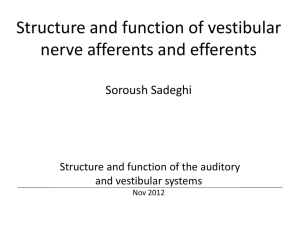




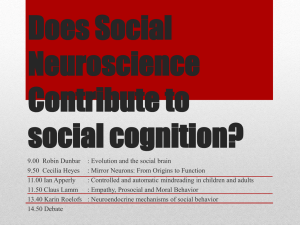
![Booking Form SPaRC ASM 27 March 2014[1].ppt](http://s2.studylib.net/store/data/005467834_1-e4871078a04d228fe869fa8fba421428-300x300.png)
